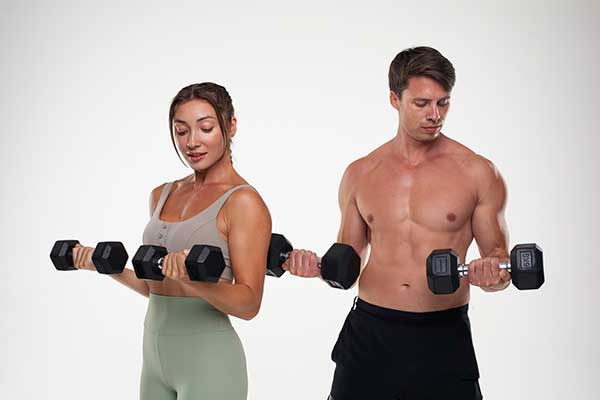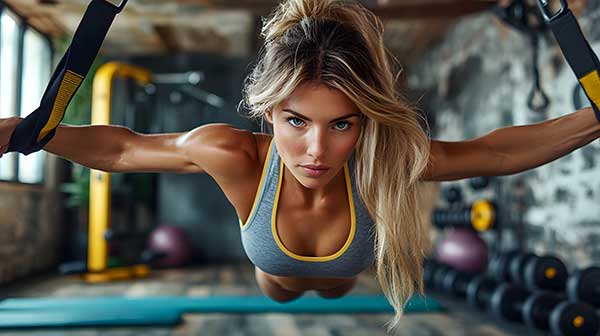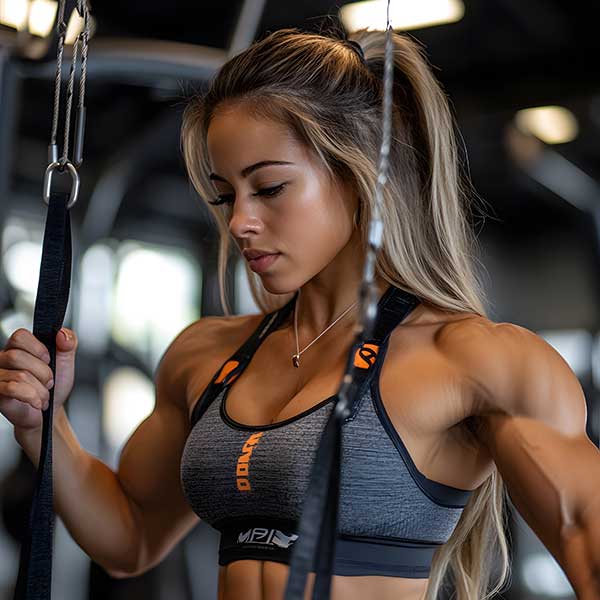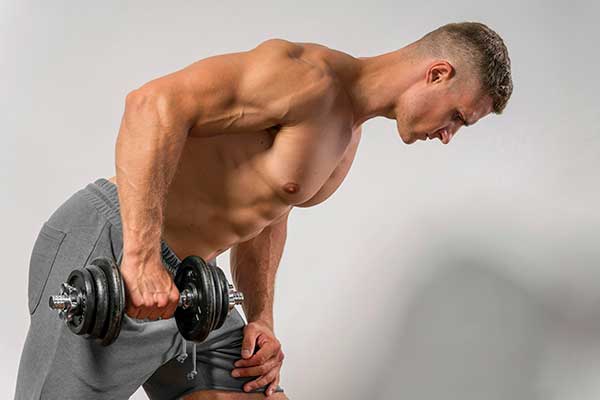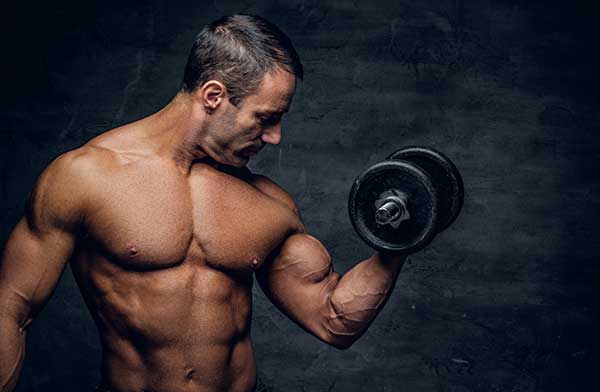The Different Types of Arm Workouts for Maximum Muscle Growth and Strength
Introduction to Arm Workouts
When it comes to fitness, many people dream of having powerful arms that can lift and impress. Arm workouts are not just about aesthetics; they play a crucial role in overall strength and functionality. Whether you’re looking to sculpt those biceps, enhance your triceps, or develop grip strength through forearm exercises, understanding the different types of arm workouts is essential for anyone serious about muscle growth.
Strong arms do more than turn heads at the gym—they support everyday activities and contribute to improved athletic performance. So if you’re ready to pump up your training routine and unlock your full potential, dive into the world of arm workouts designed for maximum muscle growth and strength!
Benefits of Strong Arms
Strong arms offer more than just impressive aesthetics. They play a crucial role in daily activities and functional strength. Everyday tasks like lifting groceries or carrying children become easier with well-developed arm muscles.
In the gym, strong arms contribute to better performance across various exercises. Whether it’s pushing during bench presses or pulling in rows, powerful arms enhance your overall strength.
Health-wise, building arm strength can improve joint stability and reduce injury risk. Stronger muscles support joints, helping prevent common issues associated with weak connective tissues.
Moreover, confidence often grows alongside physical strength. Defined arms can boost self-esteem and motivate you to pursue fitness goals further.
A balanced upper body workout not only sculpts your physique but also enhances athletic ability in sports requiring coordination and power from the upper limbs.
Different Types of Arm Muscles
Arm muscles can be categorized into three main groups: the biceps, triceps, and forearms. Each plays a vital role in upper body strength and aesthetics.
The biceps brachii is the muscle that people often think of first. This prominent muscle helps with elbow flexion and gives your arms that coveted peak when well-developed.
Next up are the triceps brachii, located at the back of your arm. They account for a significant portion of arm mass and assist in extending the elbow. Strong triceps contribute to overall arm strength.
Don’t overlook the forearm muscles. These smaller but essential muscles enhance grip strength and stability during various exercises.
Together, these muscle groups create balance in your arms while supporting functional movement for daily tasks or lifting weights effectively. Focusing on all three ensures maximum growth and development across your upper body.
Bicep Workouts for Defined Arms
Bicep workouts are essential for sculpting well-defined arms. A strong bicep not only enhances your appearance but also contributes to your overall strength.
To target this muscle effectively, consider incorporating classic exercises like curls. Dumbbell curls and barbell curls help isolate the biceps, maximizing growth potential.
For a more advanced challenge, try hammer curls or concentration curls. These variations engage different parts of the bicep and promote balanced development.
Don’t forget about tempo; slow down your repetitions to increase tension on the muscles. This technique can lead to greater hypertrophy over time.
Remember to mix in bodyweight options too, such as chin-ups, which provide an excellent compound movement that works multiple muscle groups while emphasizing the biceps.
Stay consistent with these workouts for impressive results and defined arms that stand out during any activity.
Tricep Workouts for Stronger Arms
Triceps make up a significant portion of your upper arm. Focusing on these muscles can lead to stronger and more defined arms.
Start with tricep dips. They are effective and can be done anywhere, using just a bench or chair for support. This exercise targets all three heads of the triceps, promoting balanced growth.
Skull crushers are another excellent option. Lying down while extending weights from forehead level engages the muscle deeply, fostering strength and definition.
Push-ups also deserve attention. By varying hand positioning—close grip for emphasis on the triceps—you enhance overall arm strength while engaging core stability.
Don’t overlook overhead extensions either; they effectively isolate the long head of the tricep for maximum impact. Incorporating these exercises into your routine will help build endurance as well as size in your arms.
Forearm Exercises for Grip Strength
Forearm exercises play a crucial role in enhancing grip strength, which is vital for many physical activities. A strong grip can improve performance in sports and everyday tasks alike.
One effective exercise is the wrist curl. This targets the flexor muscles of the forearm. By holding a dumbbell with your palm facing up, you can curl it towards yourself while keeping your elbows stationary.
Another great option is the farmer’s walk. Simply grab a pair of heavy weights and walk for distance or time. This not only strengthens your forearms but also engages other muscle groups.
Don’t overlook plate pinches either. Hold two weight plates together with just your fingertips for as long as possible to build endurance and grip strength simultaneously.
Incorporating these movements into your routine will lead to noticeable improvements over time, setting a solid foundation for all upper body workouts.
Shoulder and Back Exercises for Overall Arm Strength
Shoulders and back play a crucial role in arm strength. When you strengthen these areas, your arms become more powerful and resilient.
Exercises like overhead presses enhance shoulder stability while also targeting the triceps. Incorporating dumbbells or resistance bands can add variety to your routine.
Rows are essential for building back muscles that support overall arm functionality. Bent-over rows with a barbell or single-arm dumbbell rows effectively engage multiple muscle groups.
Pull-ups not only challenge the biceps but also activate the shoulders and upper back, offering a compound workout effect.
Always ensure proper posture during these exercises to prevent injuries. Engaging your core will maximize efficiency as well. These movements complement traditional arm workouts, promoting balanced development across all upper body muscles.
Tips for Proper Form and Technique
Proper form is crucial for maximizing muscle growth and preventing injuries. Always start with a lighter weight to master your technique.
Focus on your grip. A solid hold can make all the difference in maintaining control throughout each movement. Your wrists should remain straight, avoiding unnecessary strain.
Engage your core during arm workouts. A strong core stabilizes your body and helps transfer energy effectively to your arms.
Breathe correctly—exhale on exertion and inhale while returning to starting position. This rhythm keeps you energized.
Stay mindful of your posture as well. Keep shoulders back and down; this alignment not only protects against injury but also ensures optimal muscle activation.
Listen to your body’s feedback. If something feels off, don’t hesitate to adjust or seek guidance from a fitness professional for personalized tips tailored to you.
Sample Arm Workout Routine
Creating a balanced arm workout routine is key to building strength and muscle. Start with bicep curls, using dumbbells or a barbell. Aim for three sets of 10-12 reps.
Next, move on to tricep dips. Use parallel bars or a sturdy bench for this exercise. It’s excellent for targeting the back of your arms.
Incorporate hammer curls as well; they work both the biceps and forearms effectively. Three sets of 10 reps will do wonders.
Add wrist curls to strengthen your forearms further. Perform two sets of 15-20 reps for optimal results.
Finish with shoulder presses to engage those upper muscles that support overall arm strength.
Mix in some rest days, allowing your muscles time to recover and grow stronger between sessions. Consistency is crucial, so stick with it!
Conclusion
When it comes to building strength and muscle in your arms, understanding the different types of arm workouts is essential. Each component—the biceps, triceps, forearms, shoulders, and back—plays a vital role in creating an impressive physique. By incorporating targeted exercises for each muscle group into your routine, you can achieve not only enhanced aesthetics but also better functional strength.
The benefits of strong arms extend beyond just appearance. They contribute to improved performance in various physical activities and everyday tasks. Whether you’re lifting weights at the gym or carrying groceries at home, having well-developed arm muscles makes everything easier.
Utilizing specific bicep workouts helps forge defined arms that stand out. Focusing on tricep exercises ensures those powerful muscles are equally prioritized for balanced development. Forearm training shouldn’t be overlooked either; grip strength is crucial for most lifts and daily functions.
Moreover, don’t forget about shoulder and back exercises as they complement overall arm strength significantly. These combined efforts lead to a robust upper body capable of tackling any challenge.
Remember proper form is key when performing these workouts to avoid injury and maximize effectiveness. Consider following a sample workout routine that incorporates all these elements thoughtfully tailored to fit your fitness level.
With dedication and consistency applied across various arm workout types, you’ll soon see significant improvements in both muscle growth and overall strength throughout your upper body.
- About the Author
- Latest Posts
Johnnie D. Jackow Sr., the founder and CEO of Total Body Fitness, Worldwide, has a long-standing career in the fitness industry. He began as a certified personal trainer in the mid-90s and soon after authored his first weight loss book in 1998. This led to the launch of Total Body Fitness, Nationwide in the USA at the same time. Johnnie gained recognition as the fitness guru of his time, running infomercials on local TV late at night in Houston, Texas. Over the years, he has helped more than 40,000 individuals from all over the world achieve their health and fitness goals. With over 60,000 hours of documented training in integrative functional medicine, he completed his PhD in human physiology in 2010. His primary objective is to assist people in reaching their health and fitness goals through alternative approaches rather than relying solely on conventional medicine and pharmaceutical drugs. Today, with almost three decades of experience under his belt, Johnnie continues to be a leader in health and fitness.

